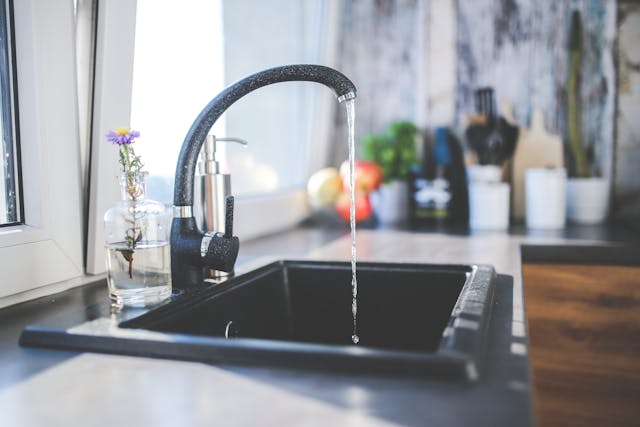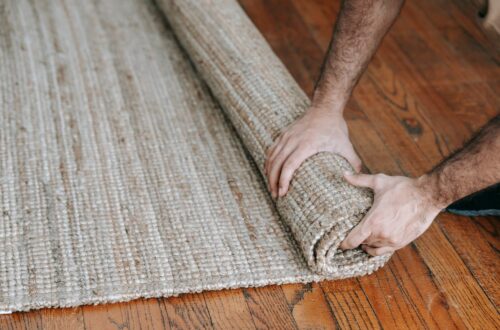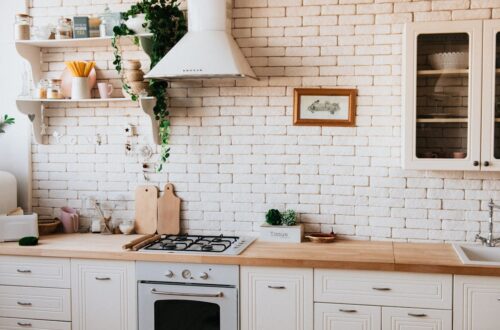Ever tried painting a masterpiece with muddy brushes? That’s what cooking in a dirty, chaotic kitchen feels like. No matter how great the ingredients or how perfect the recipe, the mess clings to everything, like static on silk.
According to a study by NSF International, over 75% of kitchen sponges and dishcloths harbor bacteria like E. coli and Salmonella. That’s not just icky — it’s a reminder that even the most nourishing spaces can become breeding grounds for stress and sickness without the right care.
But here’s the truth: It’s not the act of cooking that turns a kitchen into a disaster zone. It’s the absence of a system — a rhythm, a method, a flow.
I used to adore cooking but despised the aftermath: the leaning towers of dishes, the battlefield of grease, and the countertop chaos that followed every meal. The joy was real, but the mess was louder.
Until one day, I stopped treating cleaning as the epilogue and started treating it like part of the story. With every trial (and more than a few tomato-sauce mishaps), I learned this:
You can absolutely keep your kitchen clean while cooking every day — and it’s not about perfection. It’s about pattern. It’s not magic. It’s a method.
So here’s my no-fluff guide — not filled with shiny Pinterest tricks, but with gritty, real-world habits that survive Monday mayhem, Friday laziness, and everything in between.
1. The Pre-Cooking Ritual That Sets the Tone
Before I even lift a spoon or slice a tomato, I go into setup mode. It’s like setting the stage before a performance.

Here’s what I do every single time:
- Empty the sink and dishwasher. A clear dish zone equals less clutter and no double work.
- Fill one side of the sink with hot, soapy water so I can instantly drop dirty utensils and wash in batches.
- Wipe counters before starting; it’s psychological and practical. A fresh start equates to pure intentions.
- Keep a clean kitchen towel and a microfiber cloth within arm’s reach.
This takes about five minutes, but it saves me at least 20 later. It’s a small investment for a big payoff.
Stat Fact: Homes with pre-cooking routines see up to 43% less end-of-day kitchen mess, according to a 2024 Home Organization Insights survey.
2. Clean As You Go — The Myth Busted and Rebuilt
“Clean as you go” always sounded good in theory. In practice? I’d still end up elbow-deep in suds post-dinner.
So I redefined what it actually means:
- It’s not clean everything immediately.
- It’s clean something during every natural pause.
If I’m waiting for onions to caramelize or pasta water to boil, I wipe down the counters. When the pan’s heating, I rinse out that measuring cup. I keep a countertop waste bowl for peels and scraps so I’m not running back and forth to the trash, creating new mess trails.
This method turned dreaded cleanup into a background task, not a finale.
Insight: A 2023 hygiene study showed that people who adopt micro-cleaning routines reduce cleanup time by 30% daily.
3. The Power of Zoning — Because Not Every Counter is Equal
Here’s the thing: my kitchen used to feel like a battlefield. After zoning it? It became a workflow dream.
My Kitchen Zones:
- Prep Zone: Knives, chopping board, mixing bowls.
- Cooking Zone: Stove, pots, spatula, spoon rest.
- Clean Zone: sink, drying mat, dishwasher.
No more hunting for a spoon in the prep mess. No more dripping sauce from stove to sink. Each space has a job—and when everyone in the house sticks to it, messes stay where they belong. Even in a small kitchen, zoning works. All you need is intentionality.
Tip: Treat your kitchen like a mini workspace. Assign purpose to places.
4. Turning Wait Time into Cleanup Gold
Cooking often includes dead time—waiting for a boil, a bake, or a blend. This is when most of us doom-scroll or wander off. But I turned this time into gold.
During downtimes, I:
- Wipe cabinet handles.
- Clean one shelf in the fridge.
- Rinse and stack what I’ve already used.
- Replace towels or swap out dirty sponges.
It doesn’t interrupt the cooking flow—in fact, it complements it. By the time dinner’s done, most of the kitchen already looks like I finished cleaning.
According to SmartHome Kitchen’s 2025 survey, households using this method saw a 60% drop in end-of-day kitchen mess.
5. The Fewer Tools, the Cleaner Workflow Principle
Some recipes recommend six bowls, three spoons, and every appliance under the sun. But my rule is simple: use less, clean less.
Unless it’s absolutely necessary, I:
- Use the same bowl twice (rinsing between steps).
- Opt for multipurpose tools (a wooden spatula that I can stir and serve with).
- Avoid niche gadgets that add cleanup without adding value.
This not only reduces the mess but also forces me to simplify the recipe process itself.
Note: It’s not about being frugal. It’s about being functional.
Kitchen minimalism = maximum sanity.
6. The Sacred 10-Minute Reset
After cooking, I used to do everything later. Spoiler: later never came. Now I swear by the 10-minute post-cook reset.
Here’s my list:
- Load the dishwasher or wash the must-clean items by hand.
- Wipe down the stove and splatter zone.
- Toss the countertop waste bowl into the compost/trash.
- Dry and hang towels. Done.
This 10-minute habit keeps my kitchen fresh and me relaxed. It’s also a wind-down moment. After all, cleaning doesn’t have to be a punishment—it can be the final ritual of a good meal.
Pro Tip: Set a timer. Treat it like brushing your teeth. Non-negotiable.
7. The Weekly Deep Refresh That Powers My Daily Ease
Every Sunday, I set aside 30 minutes to go deeper. It’s not a deep-clean day—but a clean-the-forgotten day.
My checklist:
- Wipe fridge handles, switch plates, and faucet heads.
- Empty the crumb tray in the toaster.
- Clean drawer liners.
- Do a baking soda scrub of the sink and garbage disposal.
This keeps bacteria away and stops minor grime from becoming major headaches.
I do it with music or a podcast on—nothing heavy, just soothing. These little resets keep daily maintenance from ever becoming overwhelming.
8. When Cleaning Is Shared, It Becomes Effortless
I cook most days, but I don’t clean alone. If I cooked the meal, my partner rinses and loads the dishwasher. If he cooked, I would do the reset. Even my child helps by sorting utensils or putting away clean dishes.
Cleaning becomes a shared ritual, not a burden dumped on one person.
This also teaches respect for space. The kitchen is no longer my zone. It’s our space—and everyone contributes to keeping it livable, lovable, and clean.
Life Lesson: Clean kitchens are not a solo performance. They’re a team effort.
Bonus: The Unexpected Benefits of a Clean-While-Cooking Routine
I didn’t just get a cleaner kitchen. I got:
- Fewer pests (clean kitchens = less reason for bugs).
- Fewer odors (no forgotten food scraps or sticky counters).
- A lighter mental load (I don’t dread cleanup anymore).
- A more joyful cooking experience (because the space supports me, not fights me).
Cooking went from a chore to a creative outlet again.
Clean Cooking Is Conscious Cooking
Here’s what I’ve learned: You don’t need to be obsessive or spend hours cleaning. You just need a rhythm. A system. And a little self-discipline.
Keeping your kitchen clean while cooking every day isn’t just doable—it becomes automatic once you build the habits.
I’ve tried it both ways. And I’ll never go back to clutter, chaos, and crusty pans.
So if you’re still wondering how to keep your kitchen clean while cooking every day, remember this:
Start small. Stay consistent. Respect the space that feeds you.
And most of all—make it feel good. Because when the kitchen feels good, everything that comes out of it tastes better.





